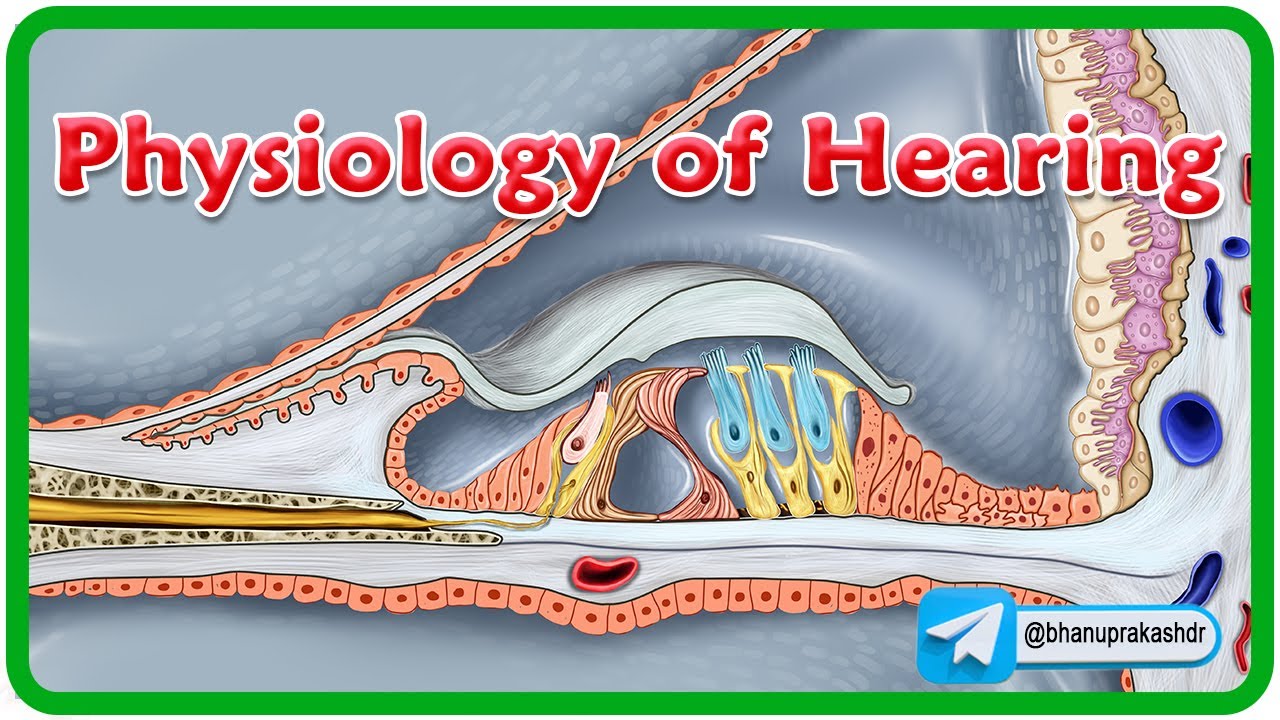ANATOMY OF EXTERNAL EAR - Dr.G.Bhanu Prakash
Summary
TLDRThis lecture provides a comprehensive overview of the anatomy of the external ear. It covers the structure and function of key components, including the pinna (auricle), external auditory meatus (ear canal), and tympanic membrane. The pinna’s cartilage and skin layers are discussed, along with its importance in reconstructive surgery. The external auditory meatus is divided into its cartilaginous and bony parts, highlighting their susceptibility to infections. The lecture also touches on anatomical gaps, such as the fissures of Santorini and foramen of Huschke, that play a role in the spread of infections, making the ear's structure crucial for both clinical assessments and surgical interventions.
Takeaways
- 😀 The ear is divided into three parts: the external ear, middle ear, and internal ear.
- 😀 The external ear consists of the pinna (also known as the auricle), the external auditory meatus, and the tympanic membrane.
- 😀 The pinna is primarily made of yellow elastic cartilage, except for the lobule, which contains fat.
- 😀 The skin of the pinna is tightly adherent to the perichondrium on the lateral surface, but loosely attached on the medial surface.
- 😀 The pinna has various features, including the lobule, tragus, anti-tragus, helix, and anti-helix, which help in identifying its structure.
- 😀 The external auditory meatus is not a straight tube; its outer part is directed upwards, backwards, and medially, while the inner part is directed downwards and forwards.
- 😀 The outer part of the auditory canal is cartilaginous (8mm in length) and contains hair follicles and sebaceous glands, which make it susceptible to infections.
- 😀 The inner part of the auditory canal is bony (16mm in length) and lacks hair follicles and glands, making it less prone to infections.
- 😀 The cartilaginous part of the auditory tube has gaps called 'fissures of Santorini', which allow infections to spread from the outer canal to the mastoid or parotid glands.
- 😀 The bony part of the external auditory meatus narrows to form the isthmus (6mm from the tympanic membrane), making foreign objects difficult to remove, potentially leading to infections and perforations.
Q & A
What are the three main parts of the ear discussed in the lecture?
-The ear is divided into three parts: the external ear, the middle ear, and the internal ear.
What is the function of the pinna (auricle) in the external ear?
-The pinna acts as a sound collector and funnel, directing sound waves into the external auditory meatus. It also serves as a graft material in reconstructive surgeries and helps with directional hearing.
What material makes up the framework of the pinna (except the lobule)?
-The framework of the pinna is made up of yellow elastic cartilage, except for the lobule, which contains fat.
What is the significance of the Incisura terminalis in ear surgeries?
-The Incisura terminalis is a part of the pinna devoid of cartilage, making it an ideal location for surgical incisions in procedures involving the auditory canal or mastoid, as it avoids cutting through cartilage.
What are the key features of the external auditory meatus?
-The external auditory meatus is 24 mm in length and consists of an outer cartilaginous part (8 mm) and an inner bony part (16 mm). It has a narrowing called the isthmus, located 6 mm lateral to the tympanic membrane, and contains glands and hair follicles in the cartilaginous portion.
What is the role of the fissures of Santorini in ear infections?
-The fissures of Santorini are gaps in the cartilaginous part of the external auditory meatus that act as a route for infections to spread between the auditory canal, the parotid gland, and the mastoid.
Why is the skin of the cartilaginous part of the external auditory meatus thicker than the bony part?
-The skin covering the cartilaginous part is thicker and contains ceruminous and sebaceous glands, as well as hair follicles, making it more vulnerable to infections such as staphylococcal infections of hair follicles.
What happens if foreign material becomes lodged near the isthmus of the external auditory meatus?
-If foreign material becomes lodged near the isthmus, which is located 6 mm lateral to the tympanic membrane, it can be difficult to remove and may lead to infections, perforations, or discharge due to the narrowing of the canal in this area.
What is the function of the anterior resist in the bony part of the external auditory meatus?
-The anterior resist acts as a reservoir for discharge from infections or perforations in the middle ear and helps in the drainage of debris from the ear canal.
What is the foramen of Heschl and why is it important in relation to ear infections?
-The foramen of Heschl is a deficiency in the antro-inferior part of the bony canal, which is present primarily in children under 4 years old, but sometimes in adults. It can facilitate the spread of infections between the parotid gland and the ear canal.
Outlines

Этот раздел доступен только подписчикам платных тарифов. Пожалуйста, перейдите на платный тариф для доступа.
Перейти на платный тарифMindmap

Этот раздел доступен только подписчикам платных тарифов. Пожалуйста, перейдите на платный тариф для доступа.
Перейти на платный тарифKeywords

Этот раздел доступен только подписчикам платных тарифов. Пожалуйста, перейдите на платный тариф для доступа.
Перейти на платный тарифHighlights

Этот раздел доступен только подписчикам платных тарифов. Пожалуйста, перейдите на платный тариф для доступа.
Перейти на платный тарифTranscripts

Этот раздел доступен только подписчикам платных тарифов. Пожалуйста, перейдите на платный тариф для доступа.
Перейти на платный тарифПосмотреть больше похожих видео
5.0 / 5 (0 votes)






